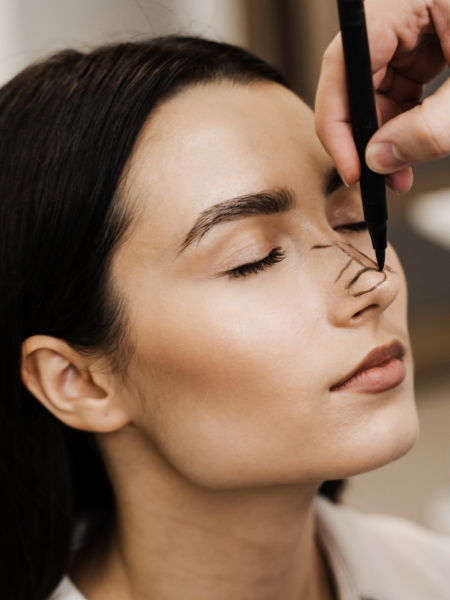
Rhinoplasty, often referred to as a “nose job,” is a surgical procedure that can transform the appearance and function of your nose. Whether you’re seeking a cosmetic enhancement or need to correct a breathing issue, the decision to undergo rhinoplasty is a significant one. While the anticipation of the procedure itself is exciting, it’s equally important to understand what comes next—the rhinoplasty recovery process.
Rhinoplasty is a surgical procedure that reshapes the nose, making it one of the most intricate and commonly performed cosmetic surgeries. The reasons for getting a rhinoplasty vary from person to person, including aesthetic improvements, addressing breathing problems, or even repairing trauma-related deformities. Regardless of the motivation behind it, one thing remains constant: the importance of knowing what to expect during the recovery phase.
Before delving into the specifics of rhinoplasty recovery, it’s crucial to establish realistic expectations. Rhinoplasty recovery is a process that unfolds over several weeks, and understanding this can help reduce anxiety and frustration. While everyone’s experience may differ slightly, this guide will provide a general overview of what you can anticipate during the various stages of recovery.
The immediate aftermath of rhinoplasty can be a bit disorienting. As you wake up from anesthesia, you may feel groggy and disoriented. It’s essential to have a responsible adult accompany you, as you won’t be able to drive yourself home. Your surgeon will provide specific post-operative instructions to follow.
Pain is a common concern after rhinoplasty, but it can typically be managed with prescribed medications. It’s crucial to take your pain medication as directed and not wait until you’re in severe discomfort. This proactive approach can make your recovery more comfortable.
Swelling and bruising around the nose and eyes are normal after rhinoplasty. Using cold compresses and keeping your head elevated can help reduce these symptoms. Be patient; it may take a few days for them to subside.
During the initial stages of recovery, having a support system is invaluable. A friend or family member can assist with tasks you may find challenging in your condition, such as preparing meals and helping with daily chores.
As the first week progresses, you may still experience discomfort and some pain. Continue taking your prescribed pain medications and follow your surgeon’s guidance on when to taper off.
Taking care of the surgical sites is crucial for preventing infection and promoting proper healing. Keep the incision areas clean as instructed by your surgeon and avoid any unnecessary touching or manipulation.
During the first week, it’s essential to rest and avoid strenuous activities. Your surgeon will provide guidelines for resuming light activities, such as walking, but be sure not to overexert yourself.
Your surgeon will schedule follow-up appointments to monitor your progress. These appointments are essential for tracking healing and ensuring that everything is proceeding as expected. Be sure to attend all of them.
During follow-up appointments, your surgeon will assess your healing progress and make any necessary adjustments. These appointments are an opportunity to address any concerns or questions you may have.
Over the next few weeks, you’ll notice a gradual reduction in swelling and bruising. However, a complete resolution may take several months. Be patient; your final results will become more apparent as the healing process continues.
While your pain and discomfort will decrease, you may still experience some tenderness. Continue to follow your surgeon’s recommendations for pain management.
As the weeks go by, you can gradually reintroduce exercise and regular activities into your routine. Listen to your body and avoid anything too strenuous until your surgeon gives the green light. Returning to work or school will depend on your individual progress and the nature of your job or academic commitments. Consult with your surgeon to determine the right time for your return.
 Final Results
Final ResultsIt’s important to understand that the final shape and appearance of your nose may not be immediately evident. Rhinoplasty results continue to refine and settle over time. In some cases, it may take up to a year to see the complete outcome.
The psychological adjustment to your new appearance is an essential aspect of long-term recovery. Be prepared for a range of emotions as you get used to your transformed nose. Most patients report increased self-confidence and satisfaction with their appearance after rhinoplasty.
Even after the initial recovery period, your nose may undergo subtle changes and improvements. This is entirely normal as your body continues to adapt to the surgical changes.
To maintain your rhinoplasty results, it’s essential to adopt a healthy lifestyle. This includes protecting your nose from trauma, avoiding smoking, and maintaining a balanced diet and exercise routine.
While complications are relatively rare, it’s essential to be aware of signs that may indicate a problem. If you experience severe pain, excessive bleeding, or signs of infection, contact your surgeon immediately.
In the unfortunate event of complications, your surgeon will discuss corrective procedures and treatment options with you. Additionally, seeking psychological support and counseling can help you cope with any emotional challenges that may arise.
In summary, rhinoplasty recovery is a gradual process that requires patience and adherence to medical advice. Setting realistic expectations, understanding the various stages of recovery, and maintaining open communication with your surgeon are key to achieving optimal results.
Remember that every individual’s experience is unique, and your rhinoplasty journey may differ from others. By following aftercare instructions diligently and seeking support when needed, you can look forward to enjoying the long-lasting benefits of your rhinoplasty procedure.
If you are considering rhinoplasty or have recently undergone the procedure, consult with your surgeon about any concerns or queries you might have regarding the recovery process. Choosing a board-certified and experienced surgeon is essential to ensure a safe and successful outcome.
For more information on rhinoplasty in Beverly Hills, contact Park Facial Plastics for expert guidance and personalized care. Your journey to a more beautiful and functional nose starts with the right surgeon and a commitment to your recovery.